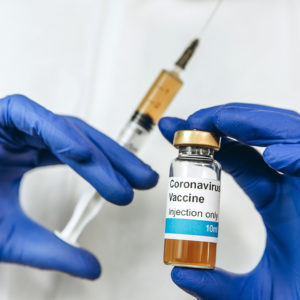States from California to New York are using race, ethnicity, and social justice considerations when deciding who gets early access to the limited supplies of COVID-19 vaccine, a controversial approach rejected by some healthcare advocates.
On Tuesday, New Hampshire Gov. Chris Sununu and his top health official told InsideSources the Granite State will be setting aside 10 percent of their Phase 1B for distribution based on race and ethnicity.
“We have a plan in terms of allocating a certain amount of our vaccine to ensure equity,” Sununu said. “A plan to reach our communities that tend to be inequitably served by our healthcare system.” And according to the head of the state’s Bureau of Infectious Disease Control, Elizabeth R. Daly, “This includes people who are in racial and ethnic minority groups.”
According to the 2010 Census, New Hampshire’s population is 93 percent white. Fewer than two percent of Granite Staters are Black. The elderly, who are most likely to die from contracting COVID, are even whiter than the population as a whole.
California Surgeon General Dr. Nadine Burke Harris says her state has implemented the Health Equity Metric and will be using social justice concerns in its vaccination decisions. “[O]ur equity metric is part of ensuring that our reopening in California happens equitably,” Burke Harris said.
A total of 32 states will be using some sort of equity calculation, rather than solely relying on science, according to a review by public health expert Harald Schmidt of the University of Pennsylvania, an advocate of the policy.
News that the Centers for Disease Control and Prevention and some national public health professionals were urging distribution of the scarce, lifesaving vaccine based on race sparked an outcry.
“That is affirmative action. That’s choosing one group over another,” says Lawrence Gostin, professor of global health law at Georgetown University.
Data guru Nate Silver of FiveThirtyEight said the vaccines should be handed out based on risk and not any other factor, and the top risk is age. “Age needs to be a higher priority than pre-existing conditions in vaccine rollout plans. Or a lot of people are going to die unnecessarily. It really is that simple.”
“What’s next?” asked healthcare expert and former Republican New York Lt. Governor Betsy McCaughey. ”Requiring that when emergency rooms are packed, minorities and poor people get helped ahead of the elderly?”
For months, politicians and public policy experts have been debating how to best distribute the early rounds of the vaccine, in particular, whether frontline workers or the elderly should be the top priority. Social justice advocates have come down on the side of care providers, in part because, as Schmidt said last month, “Older populations are whiter. Instead of giving additional health benefits to those who already had more of them, we can start to level the playing field a bit.”
According to CDC data, people of color are about three times more likely to die from COVID-19 than their whites. However, elderly Americans — those over the age of 85 — are 630 times more likely to die than those aged 18-29.
Sununu acknowledged it’s a difficult issue. “When it comes to the supply that we’re providing for the elderly…as well as our frontline workers, we kind of split it a little bit. Because the workers may be younger and healthier, but they come in direct contact [with infected people]. They are so vital. While they may not be as high risk, they are at extremely high risk for transmitting the virus to those who are.”
But as former Food and Drug Administration Commissioner Dr. Scott Gottlieb said recently, “If your goal is to maximize the preservation of human life, then you would bias the vaccine toward older Americans.”

